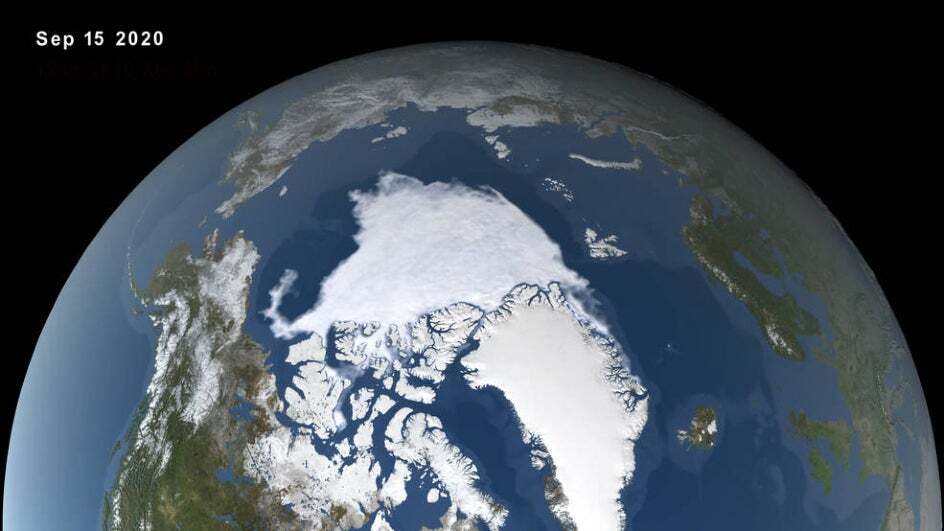#MeltingPoles: Unprecedented Arctic Heat Leads to Second Lowest Sea Ice Minimum this Year
weather.com/en-IN/india/en…
(📸: @NASA's Scientific Visualization Studio)
weather.com/en-IN/india/en…
(📸: @NASA's Scientific Visualization Studio)

#GlobalWarming is regarded to be the primary reason behind the increasing melting of ice sheets over the two polar regions of the Earth.
This year, however, the warming over the north polar region witnessed a new high with some parts recording up to 10°C warmer than normal temperatures.
Following the unusually hot summer, scientists studying the seasonal melting of sea cover have now revealed that the Arctic’s ice cover shrank to the second-lowest extent in 2020, when compared to the last 40 years of recorded data.
#SeaIceMinimum
Arctic’s sea ice undergoes seasonal patterns of change, which reduces (thin and shrink) during the summer and begins to grow again from September onwards.
Arctic’s sea ice undergoes seasonal patterns of change, which reduces (thin and shrink) during the summer and begins to grow again from September onwards.
This point of reduction is also known as the annual sea ice minimum extent. To analyse this extent of sea ice cover reduction, researchers used various satellite data, which reported sea ice to be minimum at 3.74 million sq km on September 15, 2020.
The year-on-year minimum extent of Arctic sea ice has been dropping sharply in summer in the last 20 years. This is the second time when the ice has been measured below 4 million square kilometer.
Before this, 2019 was marked as the second-lowest year after 2012, when the lowest of 3.4 million square km was recorded.
As per NASA, 2020’s minimum extent was marked at 2.48 million square kms, which is recorded to be below the 1981-2010 avg of yearly minimum extents. According to National Snow and Ice Data Center the rate of ice loss between Aug 31 and Sept 5 was faster than during any other year
#Arctic’s unprecedented warming
The Arctic is regarded to be one of the fastest-warming regions worldwide and is said to be heating at twice the global average.
The Arctic is regarded to be one of the fastest-warming regions worldwide and is said to be heating at twice the global average.
As per the WMO data, the annual surface air temperatures over the last four years (2016–2019) in the Arctic region have been the highest on record. In fact, the Arctic is warming nearly thrice as fast as the global average, as per the recent estimates.
This year's Arctic temperature has been recorded warmer than average in a range of 8 to 10°C as per NASA. This summer, parts of the Arctic recorded unusually high temperatures, which impacted the ice melt season.
For instance, #Siberia experienced an unusual period of high temperature in the first few months of 2020. Verkhoyansk, a town in #Russia, recorded a never-seen-before temperature of 38°C on June 20—the highest temperature recorded in the north polar region. S
Such unusually hot summers had a significant impact on the fragile #polarecosystems, including #wildfires and various other environmental disasters.
Impact of ice loss
As per NSIDC, the rise in temperature and melting of ice could push the ice extent even lower, risking the region as well as life forms.
As per NSIDC, the rise in temperature and melting of ice could push the ice extent even lower, risking the region as well as life forms.
Due to Arctic ice loss, the dependent species like polar bears and seals face a huge risk as the climatic change will make the Arctic an unsuitable habitat for them.
In addition, people living near the #Arctic could be forced to relocate due to increasing temperatures and wildfires. The rising temperature of the ocean has already affected marine lives and other lifeforms.
This drastic melt has triggered yet another alarm to combat the ongoing climate crisis, which is particularly affecting the poles and other vulnerable regions.
• • •
Missing some Tweet in this thread? You can try to
force a refresh














